Are you in the market for a new cutting board, one that will be a sturdy foundation through tons of kitchen prep work?
Talk to any food professional in any restaurant, bakery, cafe, hotel, or grocery store prepping pounds upon pounds of product, and they’ll tell you how important it is to have a durable prep foundation.
You won’t typically find wooden designs in most professional kitchens, especially in the prep areas where cooks deal with hours of prep work, requiring an endless rotation of strong cutting boards that can hold up well to the constant scrapes and scratches of knife cuts.
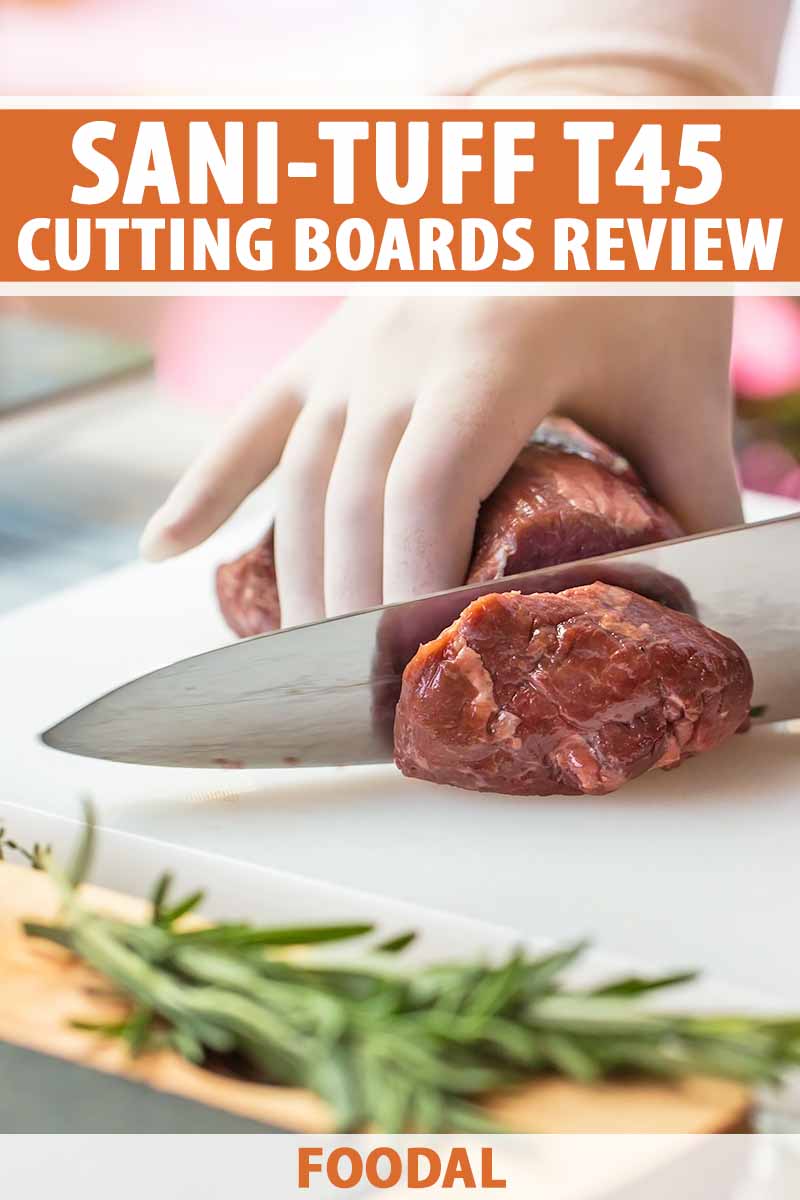
We link to vendors to help you find relevant products. If you buy from one of our links, we may earn a commission.
So if sturdiness and cleanliness are your top priorities, as well, save the more delicate and porous wooden cutting boards for another use.
Instead, consider the Sani-Tuff T45 line of cutting boards!
Available in a wide range of sizes, these options are best for someone who loves to cook – and cooks a lot – and needs a base that is strong and resilient, easy to clean, and inhibits bacterial growth when preparing raw meats.
Are you ready to step up your prep game? There’s nothing worse than a faulty foundation – take a look at this review of the Sani-Tuff T45 line, and think about upgrading your own equipment asap!
Sani-Tuff T45 Rubber Cutting Boards
Purchasing Options
The Sani-Tuff T45 line of products offers an expansive collection of different shapes, sizes, and thickness levels. Some also feature a grooved border that captures any liquids released during food prep.
Dimensions can range from small models that you can easily store and transport to those that are a couple feet in length for bigger kitchen projects.
Be sure to routinely check your buying sources for the most updated selections. For some options to see now, here are just a few of the many products to consider purchasing:
You can currently buy a rectangular model that is 12 inches long, 18 inches wide, and .5 inches thick from Amazon now.
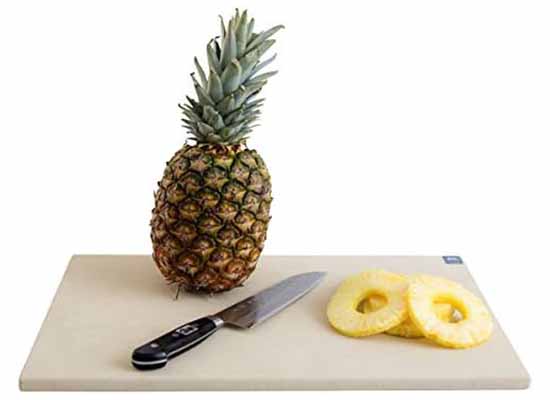
Sani-Tuff T45 12-by-18-inch Rectangular Cutting Board
You can also buy one with these same dimensions, along with the included feature of a grooved border. This is also available to purchase via Amazon.
For one of the largest sizes currently available to buy from Amazon, consider the rectangular option that is 18 inches long, 24 inches wide, and 1 inch thick.
If you prefer a smaller size, something that won’t take up too much space and would be ideal for quick prep tasks, you’ll like the rectangular model that is 6 inches long, 8 inches wide, and .5 inches thick. Find it now on Amazon.

Sani-Tuff T45 10-inch Round Cutting Board
Looking for a small round shape? A 10-inch round design is available from Amazon. This option has a thickness of 1 inch.
Keep in mind the thickness of each design, as this may influence your decision.
You may want to purchase a thicker, heavier design if you slice and dice often, and are planning on sanding it down after routine use – more on that later!
A thicker size is also better if you want a model that will stay more firmly planted on your counter.
Rubber Material
Sani-Tuff T45 products are made of a high-density and nonporous rubber compound.

A huge benefit of this line is that they are manufactured with MicroStop, an antimicrobial rubber material that suppresses the growth of harmful pathogens, keeping your prep surface safer for longer as you work in the kitchen.
MicroStop is manufactured directly into the material of the cutting board. Because of this design feature, there is no additional upkeep required to maintain its antimicrobial properties.
This is an even more appealing feature if you prep raw meats on a regular basis!
Sani-Tuff products have been tested and certified by the National Safety Foundation (NSF), and are approved for use in commercial kitchens.
The rubber material is also extremely resilient and will not crack, splinter, or absorb liquids or odors. It’s also not prone to light staining.
The Sani-Tuff products are heavier than lightweight typical plastic designs, which tend to slide around on the counter as you are cutting.
Because of their heavy weight, particularly the thicker models, they will stay put while in use – which is important when you’re wrestling with a big piece of meat, like a huge brisket or prime rib, or breaking down heftier whole winter squashes.
Knife Blade Protection
The rubber material is at an optimal hardness level that is very forgiving to the blade on your kitchen knife.
Because the board gives slightly when you’re chopping, it will help keep your blade sharper longer, protecting the blade’s sharp edge without dulling it prematurely.
Most professional chefs and many seasoned home cooks agree that wooden models are the absolute best material for keeping your knife blades sharp.
However, the Sani-Tuff T45 models also have a safe work surface for your blades, providing a similar edge retention capability as a wooden option.
Resurfacing Benefits
Another key feature with the Sani-Tuff T45 line is that the boards can be sanded down and resurfaced.
Resurfacing removes all cuts, nicks, scratches, and gashes on the surface level – essentially, you’re creating a completely new and smooth top.
This is an impressive feature for a serious at-home cook that certainly cannot be done with your typical plastic materials!
The thicker 1-inch models are able to be resurfaced many more times compared to the .5-inch models, and should last the average home user for a significant length of time.
For the best instructions on how to properly sand and resurface, read the guide provided by Sani-Tuff.
Care and Cleaning
Unlike wooden cutting boards, which require some precise care and tedious maintenance routines to preserve their quality, the Sani-Tuff rubber line is easy to clean and maintain.
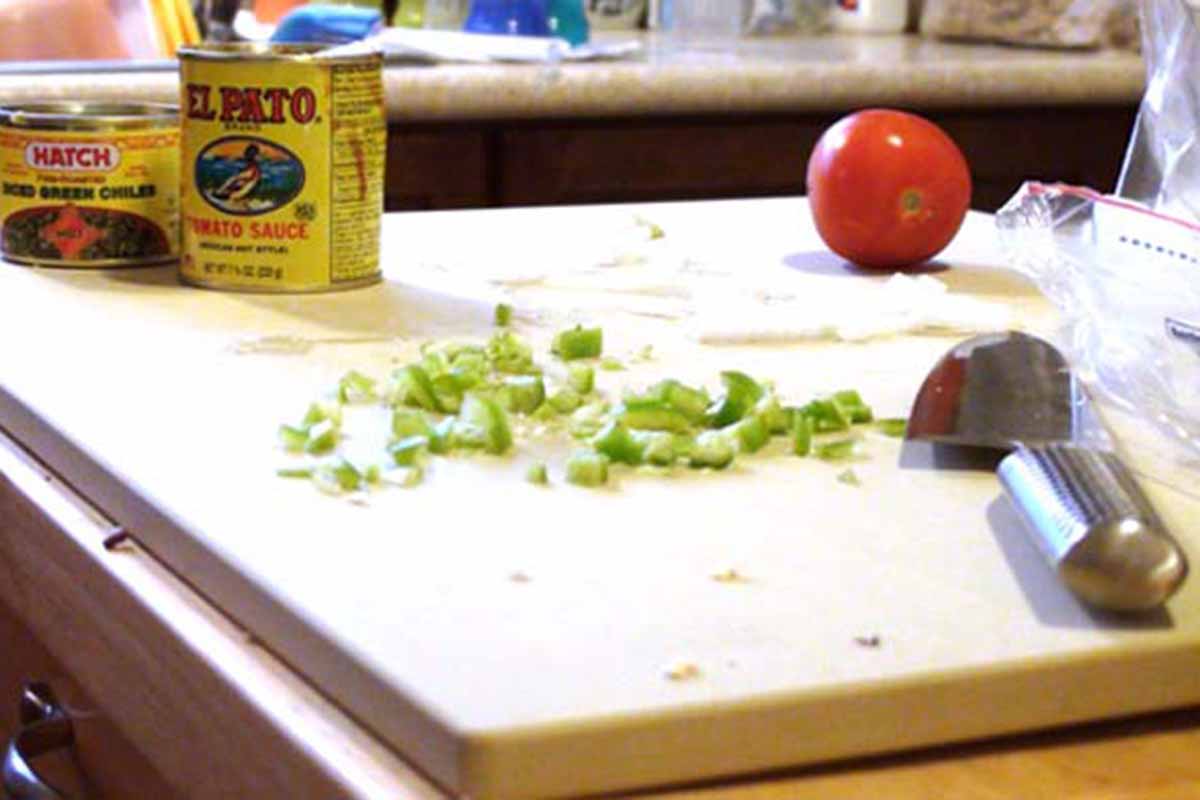
They have less upkeep than wooden models, since you don’t have to worry about water soaking into porous materials, or applying mineral oil on them regularly to keep them in the best shape.
All Sani-Tuff T45 products should simply be washed by hand with warm water, dish soap, and a non-abrasive scrubber – an easy feat to complete. They can then be air-dried on your drying rack.
You can also use vinegar and salts for cleaning, though bleach will result in premature aging and is not a suggested cleaning agent.
If there are peskier stains, you can use a melamine foam sponge.
It is not recommended by the manufacturer to clean the cutting boards in the dishwasher, as there is a risk that they may warp due to the high heat of the dishwasher.
However, as long as you carefully follow a few mindful modifications, cleaning them in the dishwasher will not be drastically detrimental.
Before activating your dishwasher, remember to turn off the drying cycle – this will eliminate the final high-heat process, significantly lowering the risk of warping.
If warping does occur, the manufacturer notes that you can try to undo that slight damage by laying it flat and weighing it down with heavy objects.
Sturdy, Safe, Sani
The Sani-Tuff T45 line really makes the most sense for a high-production kitchen environment at home.
It’s one of the best and most reliable options for someone who loves to cook or is constantly prepping large amounts of food, someone who is in the kitchen nearly every day crafting something delicious.
I hope this article helps you in your shopping quest for the best cutting board that’s right for your own personal prep necessities. What features from this particular model did you find the most appealing? Leave a comment below!
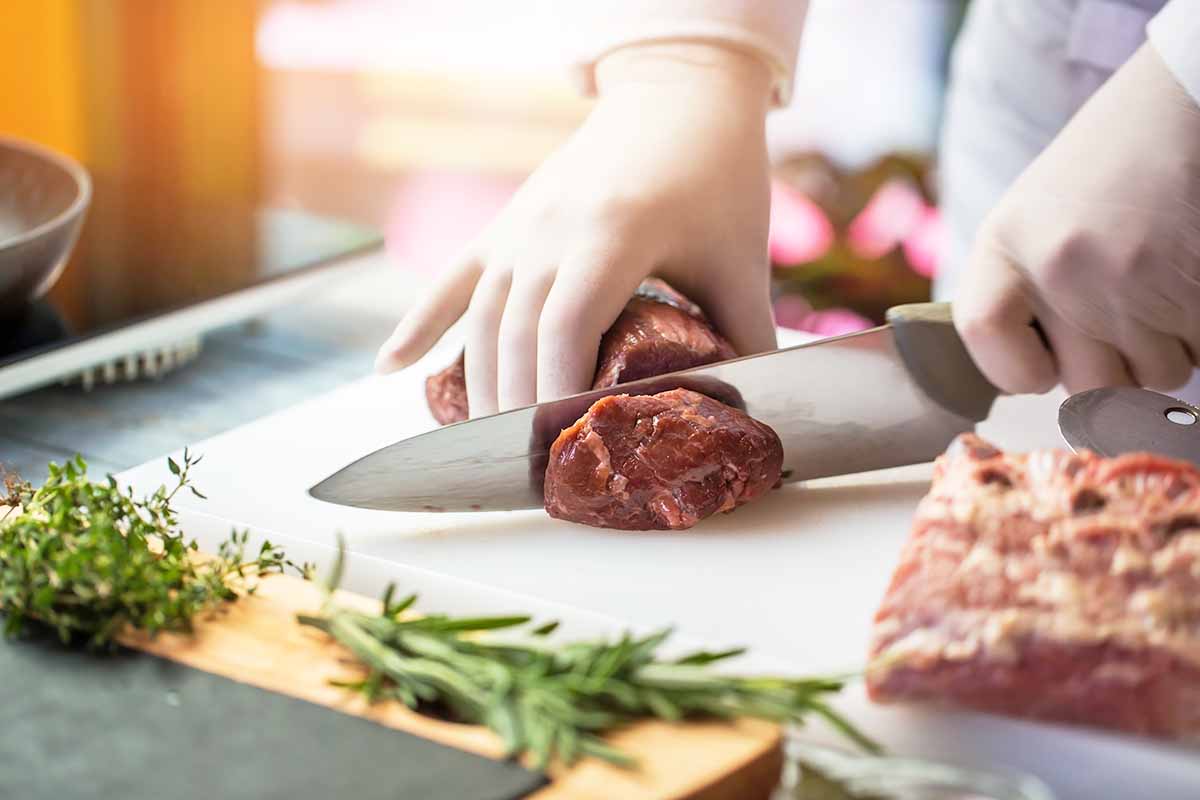
Searching for other kitchen equipment and utensils? We have more purchasing advice to share with you! Take a look at our other kitchen gear guides to find exactly what you need. Here’s a good introduction to what we review:
- 13 of the Best Kitchen Gadgets to Save You Time and Money
- Foodal’s Ultimate Guide to Paella Pans
- How to Choose the Best Mandoline
Photo by Ashley Martell, © Ask the Experts, LLC. ALL RIGHTS RESERVED. See our TOS for more details. Uncredited photos via Shutterstock. Product photos provided by Amazon. Originally published July 26, 2014 by Ashley Martell. Last updated on October 13, 2023.
About Nikki Cervone
Nikki Cervone is an ACS Certified Cheese Professional and cheesemonger living in Pittsburgh. Nikki holds an AAS in baking/pastry from Westmoreland County Community College, a BA in Communications from Duquesne University, and an MLA in Gastronomy from Boston University. When she's not nibbling on her favorite cheeses or testing a batch of cupcakes, Nikki enjoys a healthy dose of yoga, wine, hiking, singing in the shower, and chocolate. Lots of chocolate.



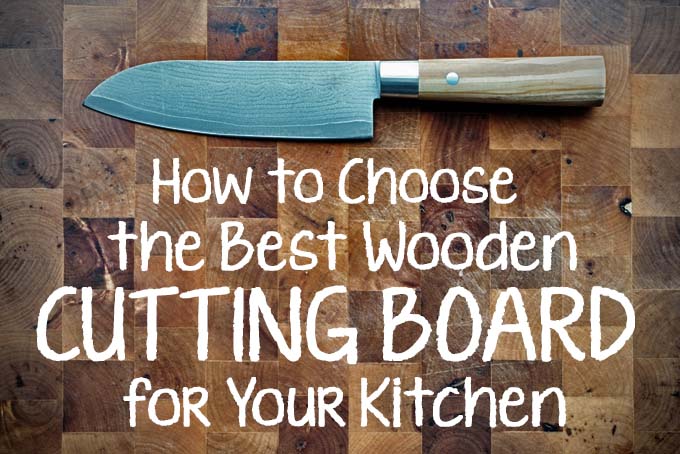
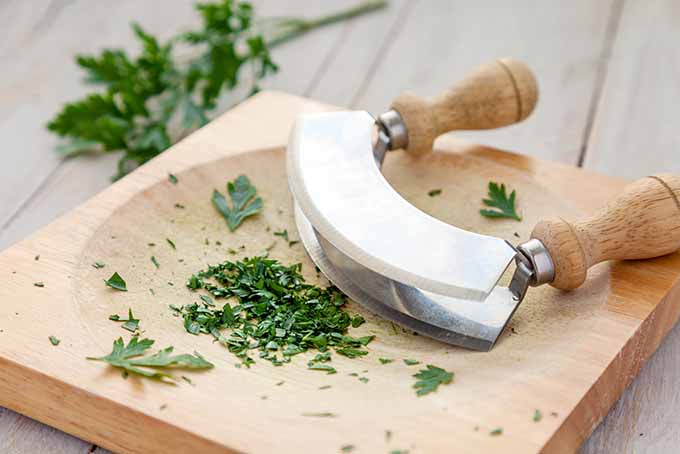
Meh, I had a go with one once, but I just couldn’t get in synch with the bounciness of the rubber. I can only get into my “rhythm” with a good solid wood block and can imagine chopping up a large amount of vegetables with one of these. I realize that they are used in many commercial establishments but it just wasn’t for me. Give me wood – keep you minds out of the gutters – any day.
Uvone, I’ll have to politely disagree with your comments as they apply to ME. I personally like the response of the rubber boards although I do notice that they dull my knives a little faster than a good end grain board would- of course not nearly as fast as glass or granite.
The Sani-tuff is soft, quite a bit softer than my wood cutting blocks. The friction is apparent as the knives cut into rubber with every slices. Although I say the knives dull somewhat faster than wood, they never really get dull. Really it seems that they go from very sharp to decently sharp fairly fast but tend not to get much duller other than what you’d normally find – this is still way sharper than most peoples kitchen knives.
For a protein only board, for use in a commercial environment, or if somebody really has to use the dishwasher (note: skip the heated drying cycle), Sani-tuff products really can’t be beat.
I have been thinking about purchasing a Sani-tuff for a while now and this article might have just tipped me over. I do not like using wooden chopping boards, I currently have a glass board but it does dull my knives and I’m not keen on the noise.
I didn’t know they could be sanded down until you mentioned it in this article, not sure how that fact escaped me. Thanks for sharing this article.
This has got to be the cutting board that knives like best. You can feel it give way under the blade, but then it forms back into place. I’m not a professional chef, but this board saves me time and does exactly as promised. It is a little tougher to use than other boards when you’re chopping without lifting the knife tip, and it’s shockingly heavy, but if you don’t mind a workout when you’re washing it, it’s a great board. I would never put a board in a dishwasher, I always wash by hand and sanitize myself.
I was all in praise of plastic cutting boards, i actually have one, i find it easier to use and clean afterward but now that the article mentions it, the carrot juice stain or the hard to clean onion stain and the knife cuts and scratches on the board as well whilst busy chopping veggies or fruits, i never liked the wooden cutting board, especially after washing it, it takes ages and ages to dry up and has that after smell of ‘ i know what you cooked last night’ regardless of how much you scrub clean..am grateful to have stumbled upon this awesome article, i will check up my piggy bank and buy myself a Sani- Tuff Rubber Cutting Board from amazon, who knows my friends might just follow suit and beg me to do the honors for them in that regard.
I was not aware the plastic makes your knifes dull – my knifes are always dull. We had a wooden board but it has been replaced with a plastic one that will be replaced soon due to stains. I will be looking into the Sani-Tuff Rubber product.
I’ve always been one to keep to wooden boards. I do have a few plastic boards but I rarely use them for cutting things. I use them more for transferring what I’ve already chopped or cut. Interesting to find out that wood boards are better for keeping knives sharp though. I was unaware of that. I do sharpen my knives weekly either way.
I have several different types of cutting boards that I use for different purposes. I do love the look and feel of my marble board, but as stated, I primarily use that when working with pastry. I do have a nice plastic one that I use frequently also, as well as a wood one, but I like the idea of the heaviness of this one, as well as that it stays put. Nothing is more irritating than food ending up in the sink or on the floor, because the board has slipped. Another factor I like is that this board can be sanded. I’m frugal, so that appeals to me, and I”m going to take a close look at these boards.
I’ve never heard of these rubber ones before. I used to use plastic versions but found they would get gross and worn really quickly. I recently changed to using wooden or bamboo ones. I love them, they are so easy to clean and don’t get as cut up as the plastic ones use to. They are also a lot thinner, lightweight and easily fit in the dishwasher.
How important is this post. I appreciate the advice about using this type of cutting board. I usually use disposable or plastic…..the rubber seems out of this world so thank you. I am really big on making sure not to mix the cutting board for meat and the boards we use to chop veggies and fruit. I love the saying separate and don’t ever cross-contaminate. Experts say it is proven that we can wash our hands thoroughly and all the other things we may do to sanitize our hands and dishes, but we can still acquire bacteria in our systems that causes us to become sick. This is a very serious issue for all families.
This board seems like a fantastic investment. I have a few cheap plastic cutting boards. They are fine as I’m not very picky, but I have one huge problem with them, they stain like nobody’s business! They look dirty and I can honestly never tell if i am cutting my fresh veggies on a dirty board or not. It’s unnerving to say the least. The fact that this board doesn’t stain easily can be sanded down is a huge plus for me. Gonna put this on my wishlist for sure!
Thanks for this article! I have been looking for new cutting boards, but think I may just invest in this. I dont like the cheap plastic ones I have. They get cut marks on them and food gets stuck so I dont feel its sanitary.